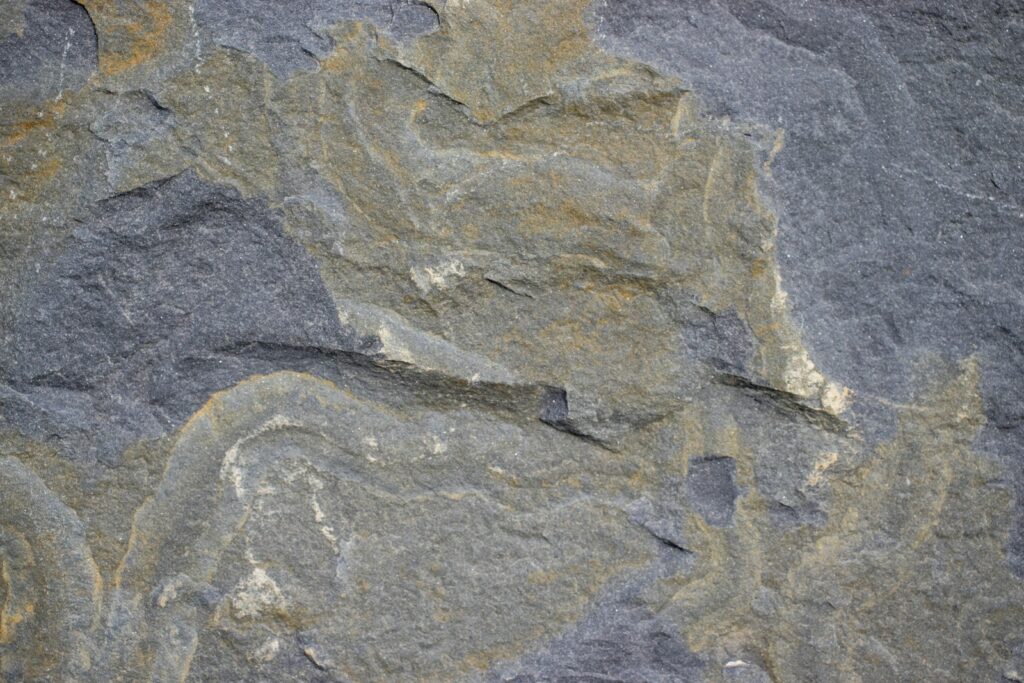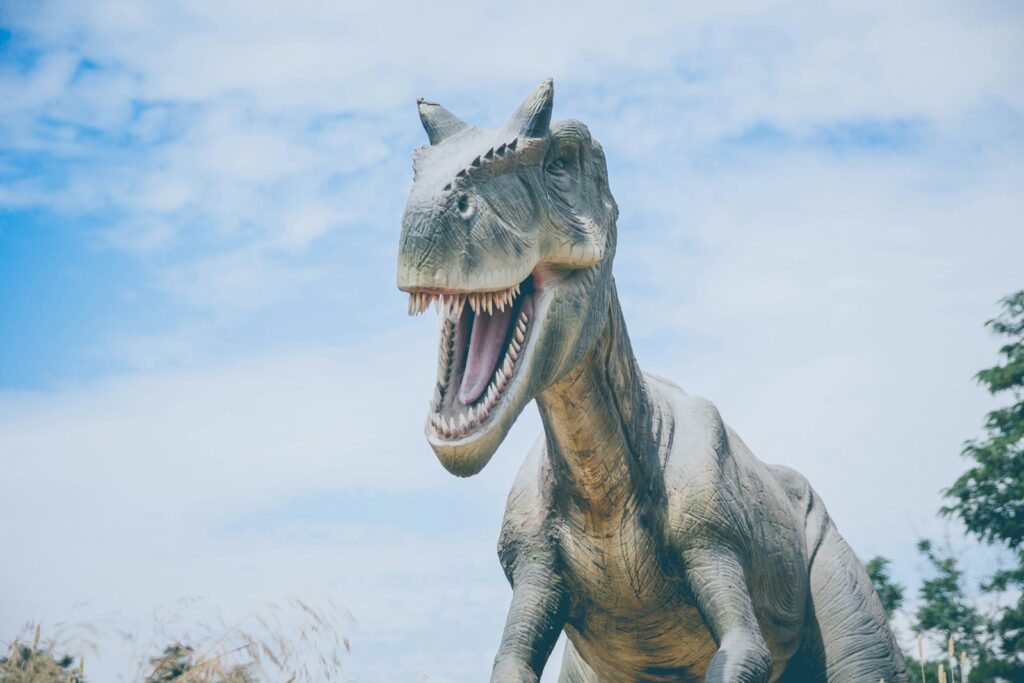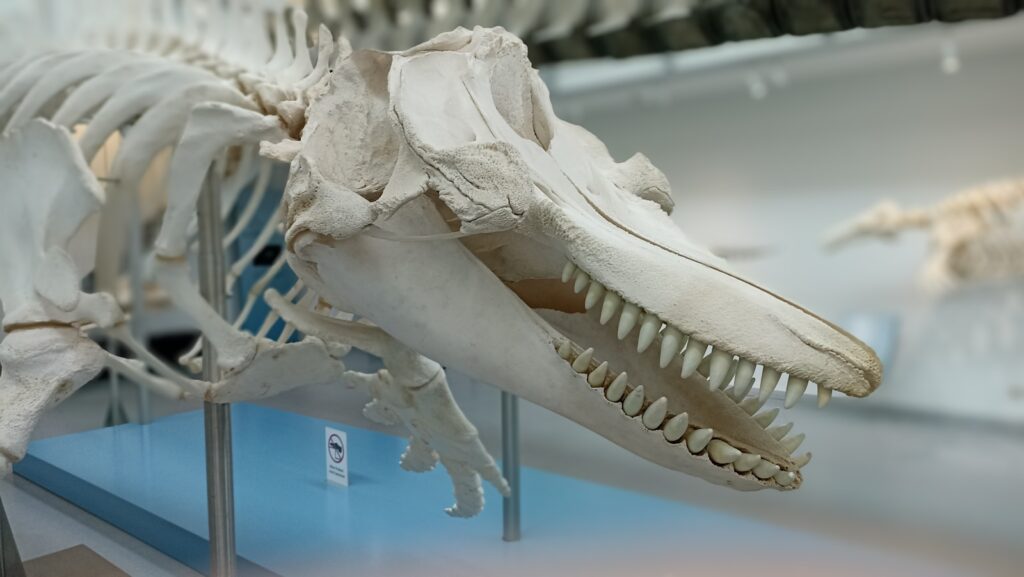When paleontologists unearth dinosaur fossils, they typically discover isolated remains that provide glimpses into prehistoric life. Occasionally, however, they stumble upon something truly extraordinary – evidence of direct interaction between ancient creatures frozen in time. In 2006, such a remarkable discovery occurred in the badlands of Montana: two dinosaurs, a predator and prey, seemingly locked in eternal combat. This extraordinary find, now known as the “Dueling Dinosaurs,” has revolutionized our understanding of dinosaur behavior, predator-prey relationships, and the prehistoric world. Let’s explore what this phenomenal fossil revealed about life in the Late Cretaceous period.
The Momentous Discovery in Montana

In the rugged terrain of the Hell Creek Formation in Montana, commercial fossil hunters made what would become one of paleontology’s most significant finds. The fossils, dating back approximately 67 million years to the Late Cretaceous period, captured what appeared to be a Tyrannosaurus rex and a Triceratops horridus locked in combat. These remarkably complete skeletons were found nearby, with evidence suggesting they died either during or immediately after their confrontation. The fossils were exceptionally well-preserved, with bones still articulated in their original positions, skin impressions intact, and even traces of soft tissue – a preservation quality rarely seen in specimens of this age. This extraordinary time capsule offered scientists an unprecedented opportunity to study not just the anatomy of these creatures but potentially their behavior during a life-or-death encounter.
The Combatants: Predator and Prey

The fossil revealed two of the most iconic dinosaurs ever to walk the Earth: a Tyrannosaurus rex and a Triceratops horridus. The Tyrannosaurus specimen appeared to be a sub-adult, roughly 22 feet long, exhibiting the characteristic massive skull with banana-sized serrated teeth designed for crushing bone. The Triceratops, meanwhile, was a robust herbivore measuring approximately 16 feet in length, armed with three facial horns and a protective neck frill that evolved specifically as defense against predators like Tthe. Rex. Both specimens were remarkably complete—over 98% intact for the Triceratops and approximately 75% for the T. rex—making them among the most complete examples of their species ever discovered. The exceptional preservation allowed scientists to examine previously unknown anatomical details that had been speculated about but never directly observed in such clarity.
Evidence of Mortal Combat

What makes this fossil truly extraordinary is the evidence suggesting these dinosaurs died while engaged in battle. The T. rex teeth were found embedded in the Triceratops’ body, while the Triceratops’ horn showed damage consistent with having been used to gore its attacker. Further analysis revealed broken T. rex teeth lodged in the Triceratops’ neck region, suggesting a powerful bite that likely severed crucial blood vessels. The position of the skeletons indicated that the Triceratops may have fallen and pinned the Tyrannosaurus underneath it during their struggle, potentially explaining why both animals perished at the same site. Paleontologists identified trauma on both skeletons consistent with combat injuries rather than scavenging activity, supporting the theory that this fossil captured an actual predation event rather than a coincidental burial of unrelated specimens. This direct evidence of predator-prey interaction is exceedingly rare in the fossil record.
Unprecedented Preservation Quality

The exceptional preservation of the Dueling Dinosaurs fossil has provided scientists with unprecedented details about these ancient creatures. Skin impressions preserved on both specimens revealed textures and patterns never before documented in such detail. The Tyrannosaurus skin showed evidence of the pebbly scales typical of large theropods, while the Triceratops preserved larger polygonal scales with different patterns across various body regions. Even more remarkably, traces of soft tissue were preserved, including possible remnants of muscle fibers and other internal structures that normally decompose rapidly after death. This exceptional preservation required very specific burial conditions—the dinosaurs were likely covered rapidly by sediment, possibly during a flood event, protecting them from scavengers and slowing decomposition. The minerals in the surrounding soil then gradually replaced the organic material, preserving even minute details of anatomy.
Revolutionary Insights into Tyrannosaurus Behavior

The Dueling Dinosaurs fossil has forced paleontologists to reconsider long-held theories about Tyrannosaurus rex behavior. For decades, debate raged over whether the T. rex was primarily a predator or scavenger. This fossil provides compelling evidence that these massive theropods actively hunted large, dangerous prey like Triceratops rather than simply scavenging already-dead animals. The injuries sustained by the T. rex during this encounter also reveal the risks these predators took when attacking well-defended prey. Multiple broken ribs and evidence of trauma to the T. rex’s chest cavity suggest the Triceratops fought back fiercely, likely using its horns as weapons. These findings challenge earlier notions that the T. rex might have been too valuable to its pack or too slow to risk injury in active hunting, instead suggesting these predators were willing to engage in high-risk hunting behavior when necessary.
Triceratops Defense Mechanisms Confirmed

The fossil battle scene has provided definitive evidence of how Triceratops used its distinctive anatomical features defensively. For generations, paleontologists theorized that the three prominent horns of Triceratops served as weapons against predators, but direct evidence was lacking until this discovery. The damage patterns on both dinosaurs suggest the Triceratops used its two longer brow horns to thrust upward at the attacking Tyrannosaurus, likely causing the rib and chest injuries observed in the predator. Additionally, the massive bone frill that extended from the back of the Triceratops’ skull shows signs of bite marks, confirming its role as a protective shield for the vulnerable neck area. The positioning of the bodies suggests a specific defense posture—the Triceratops appears to have lowered its head to present its horns toward the attacker while protecting its exposed flanks, a behavior long hypothesized but never before documented in fossil evidence.
New Understanding of Dinosaur Anatomy

The completeness of both specimens has allowed scientists to refine their understanding of dinosaur anatomy in ways previously impossible. The Tyrannosaurus skeleton revealed new details about the proportions and attachments of its notoriously small forelimbs, suggesting they may have been more functional than previously believed, possibly used to grip struggling prey during attacks. The skull of this sub-adult T. rex showed developmental features that help bridge the gap between juvenile and adult specimens, allowing paleontologists to better understand how these animals grew and changed throughout their lives. The Triceratops specimen, meanwhile, preserved details of the attachment points for muscles that controlled its heavy head, providing insights into how these herbivores managed the biomechanical challenges of supporting such large skull structures. Perhaps most significantly, the preservation of skin impressions and possible soft tissue remnants has allowed scientists to make more accurate estimates of the animals’ overall body mass and muscle distribution.
Dating and Environmental Context

The geological context of the Dueling Dinosaurs provides crucial information about when these animals lived and the environment they inhabited. Radiometric dating of the surrounding rock places the fossil at approximately 67 million years old, positioning it very close to the end-Cretaceous extinction event that would wipe out all non-avian dinosaurs roughly a million years later. Analysis of sediments surrounding the fossil indicates the battle took place in what was then a lush floodplain crisscrossed by rivers and dotted with forests. Pollen samples preserved alongside the dinosaurs reveal a diverse plant community dominated by flowering plants, conifers, and ferns that would have supported herbivores like Triceratops. The positioning of the fossils in stream sediments suggests the animals may have been buried during a flash flood event, which would explain the exceptional preservation quality. This environmental context helps scientists reconstruct the complete ecosystem these dinosaurs inhabited in the final days of the Mesozoic Era.
Controversies and Ownership Battles

The Dueling Dinosaurs fossil hasn’t just revealed scientific insights—it also ignited intense legal and ethical debates within the paleontological community. Because the specimens were discovered by commercial fossil hunters on private land, questions about ownership and scientific access became immediately contentious. Multiple lawsuits erupted regarding mineral rights and ownership claims, delaying the scientific study of the specimens for years. The fossil was eventually purchased by the North Carolina Museum of Natural Sciences in 2020 for an undisclosed amount estimated to be several million dollars, finally making it accessible to researchers. This situation highlighted the ongoing tension between commercial fossil hunting, which often discovers important specimens, and academic paleontology, which prioritizes scientific access and proper documentation of excavation contexts. The case became a flashpoint in discussions about who should own significant paleontological discoveries and how to balance private property rights with scientific and cultural heritage.
Advanced Technological Analysis

Since becoming accessible to researchers, the Dueling Dinosaurs fossil has undergone analysis using cutting-edge technologies that weren’t available when it was first discovered. High-resolution CT scanning has allowed scientists to examine internal structures without damaging the specimens, revealing details of brain cases, sinuses, and other features impossible to observe externally. Scanning electron microscopy of preserved skin impressions has documented cellular-level details of dinosaur integument, including the structure and arrangement of scales. Chemical analysis of trace elements in the bones has provided insights into the animals’ diets and environments, while advanced digital modeling has helped reconstruct the biomechanics of their fatal encounter. Perhaps most excitingly, paleontologists have identified potential preserved proteins within the soft tissue remnants, opening the possibility of recovering molecular information from these 67-million-year-old specimens. These technological approaches have transformed what we can learn from this remarkable fossil, allowing scientists to extract information that would have been impossible to access even a decade ago.
Implications for Dinosaur Coloration

The exceptional preservation of the Dueling Dinosaurs has provided tantalizing clues about dinosaur coloration, one of the most elusive aspects of prehistoric life. Microscopic structures preserved in skin impressions from both dinosaurs have been compared to similar structures in modern reptiles and birds, allowing paleontologists to make educated hypotheses about their appearance. The Tyrannosaurus appears to have had pebbly skin with evidence of varied pigmentation patterns that might have provided camouflage in the forested environment it hunted in. The Triceratops, meanwhile, shows evidence of countershading—lighter underneath and darker on top—a common pattern in modern animals that helps break up their outline when viewed by predators. Particularly interesting are the color indications on the Triceratops’ frill, which show evidence of bold patterning that may have served display purposes during mating rituals or species recognition. These color insights help transform our mental image of dinosaurs from the monochromatic movie monsters of past decades to more realistic, biologically plausible animals.
Educational and Public Impact

Beyond its scientific significance, the Dueling Dinosaurs fossil has captivated the public imagination and transformed how museums approach dinosaur exhibitions. The North Carolina Museum of Natural Sciences has designed an innovative “visible laboratory” where visitors can watch paleontologists studying the specimen in real time, bridging the gap between scientific research and public education. This approach has revolutionized science communication by making the process of discovery as accessible as the discoveries themselves. Attendance at the museum increased dramatically following the acquisition, demonstrating the enduring public fascination with dinosaurs, particularly when presented in dramatic contexts like predator-prey interactions. Educational programs built around the fossil have emphasized not just dinosaur biology but also the nature of scientific inquiry, showing how paleontologists form and test hypotheses based on fossil evidence. The dramatic narrative of two iconic dinosaurs locked in mortal combat has proven particularly effective at engaging students and visitors who might otherwise show limited interest in natural history.
Future Research Directions

The Dueling Dinosaurs fossil continues to yield new insights as technology advances and research methodologies evolve. Current and planned research includes detailed biomechanical modeling to reconstruct exactly how the battle unfolded, potentially answering questions about attack strategies and defensive postures. Microanalysis of bone healing patterns may reveal whether either animal had sustained and recovered from previous injuries, providing insights into dinosaur health and recovery capabilities. Researchers hope to extract and analyze ancient DNA, though this remains challenging for specimens of this age. Perhaps most intriguingly, the fossil may contain evidence of the animals’ last meals in preserved gut contents, potentially revealing dietary preferences with unprecedented specificity. The museum has committed to making the specimens available to researchers worldwide, ensuring that diverse scientific perspectives will contribute to our understanding of these remarkable fossils. As analytical techniques continue to advance, the Dueling Dinosaurs will likely reveal even more secrets about life in the Late Cretaceous period.
Conclusion: A Window Into Prehistoric Life and Death

The Dueling Dinosaurs fossil represents far more than just beautifully preserved specimens—it offers a rare glimpse into the dynamic interactions that shaped prehistoric ecosystems. This frozen moment of predator-prey conflict has transformed our understanding of how these iconic dinosaurs lived, fought, and died millions of years ago. From confirming long-held theories about Triceratops defense mechanisms to challenging assumptions about Tyrannosaurus hunting behavior, the fossil continues to refine and sometimes revolutionize paleontological knowledge. As research continues and technology advances, this extraordinary time capsule will undoubtedly yield further insights into the biology, behavior, and appearance of these magnificent animals. Beyond its scientific value, the Dueling Dinosaurs serves as a powerful reminder of the drama that unfolded in ancient ecosystems—a drama no less intense or consequential than the struggles for survival that continue in natural environments today.




